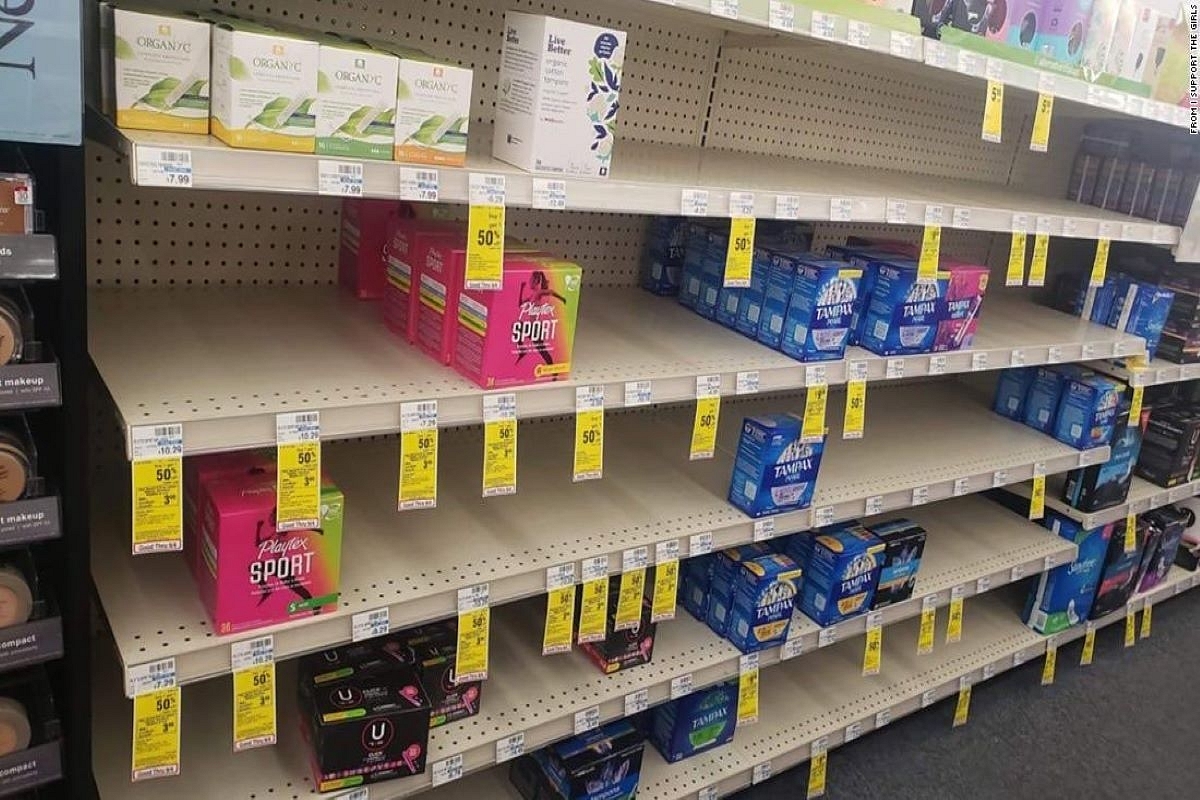News Brief
Biden's America Reeling From Tampon Shortage Adding Further Woes To A Nation Already Hit By Baby Formula Shortage
- The U.S is reeling from a tampon shortage due to disruption in supply chain by the COVID-19 pandemic, inflation, hoarding and other domestic factors.

Tampon Shortage In U.S
The U.S is reeling from a tampon shortage due to disruption in the supply chain by the COVID-19 pandemic, inflation, hoarding and other domestic factors.
Several manufacturers of tampons, including Procter & Gamble and Edgewell Personal Care, have acknowledged the lack of feminine hygiene products on the shelves.
P&G, which owns the biggest market share of menstrual products, said in an April earnings call that sourcing and transporting raw materials for menstrual products, as well as getting products on trucks to retailers, "continues to be costly and highly volatile."
Edgewell, which owns multiple menstrual product brands, attributed the lower quantities to staff shortages prompted by omicron variant infection waves, one affecting its U.S. manufacturing facility late last year and another affecting its Canadian supplier early this year.
The tampon shortage marks the second time in several months that families are left without the availability of basic necessities on store shelves. The U.S is also facing a severe shortage of baby formula.
The tampon shortage has also been attributed to the difficulty in sourcing raw materials that go into tampons -cotton, rayon, and sometimes pulp and plastic for applicators. The same raw materials are used for making medical products like personal protection equipment, the demand for which surged during the pandemic. Extreme drought in Texas, diesel prices and Russia's invasion of Ukraine also tightened the supply of those goods.
Tampons are also getting more expensive due to inflation.
Average prices rose 8.3% for a package of menstrual pads and 9.8% for tampons in the year through May 28, according to NielsenIQ, Bloomberg reported. Personal-care goods, a broad category that includes period products and items such as shampoo and shaving equipment, saw their biggest annual price jump since August 2012, April figures from the Bureau of Labor Statistics also show.
P&G recently announced a fresh round of price hikes on top of increases from about a year ago.
Support Swarajya's 50 Ground Reports Project & Sponsor A Story
Every general election Swarajya does a 50 ground reports project.
Aimed only at serious readers and those who appreciate the nuances of political undercurrents, the project provides a sense of India's electoral landscape. As you know, these reports are produced after considerable investment of travel, time and effort on the ground.
This time too we've kicked off the project in style and have covered over 30 constituencies already. If you're someone who appreciates such work and have enjoyed our coverage please consider sponsoring a ground report for just Rs 2999 to Rs 19,999 - it goes a long way in helping us produce more quality reportage.
You can also back this project by becoming a subscriber for as little as Rs 999 - so do click on this links and choose a plan that suits you and back us.
Click below to contribute.
Latest